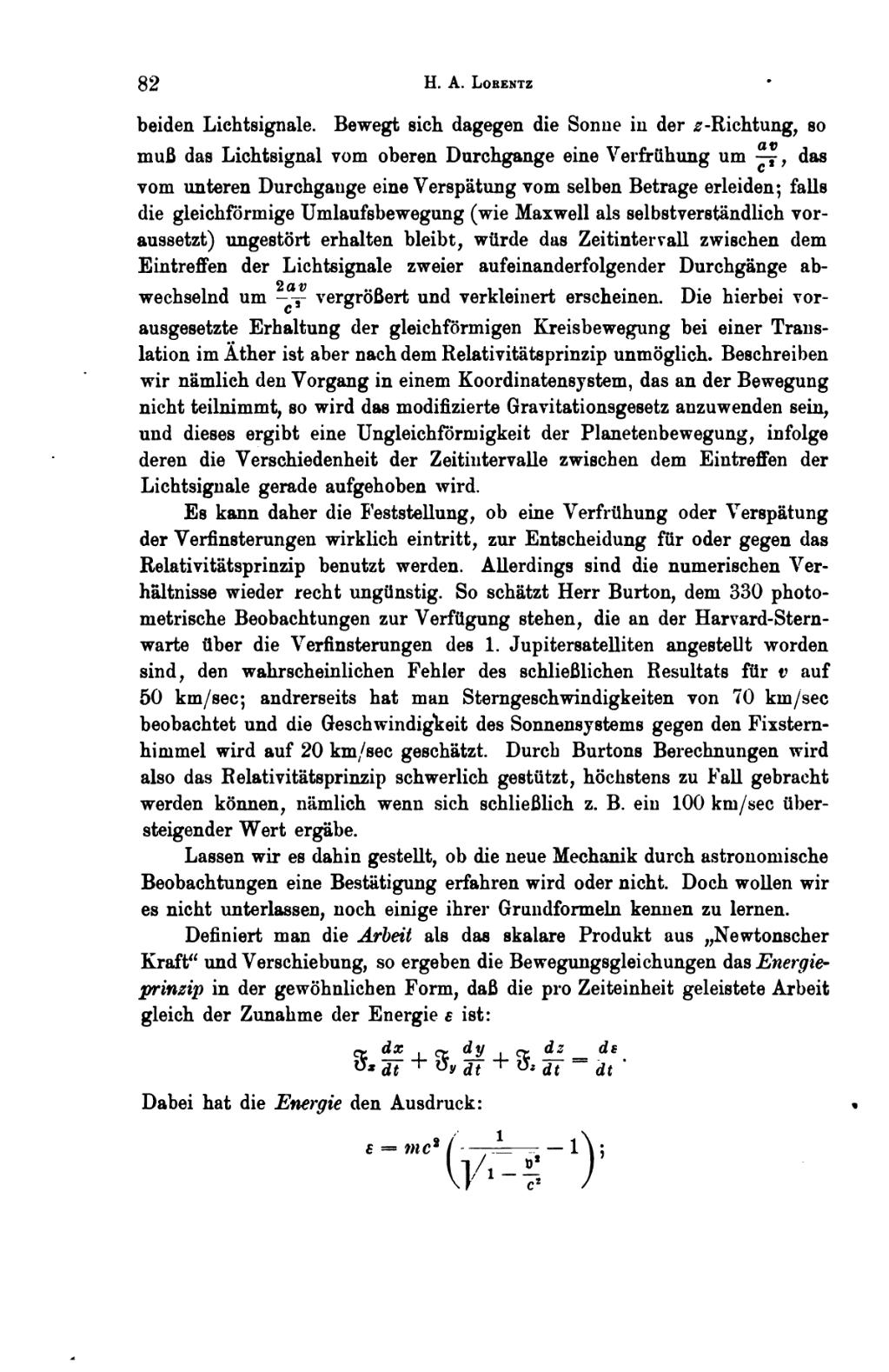both light signals. However, if the sun is moving in the -direction, then the light signal of the upper transit must suffer an earliness of , and the one of the lower transit a delay of the same amount; in case the uniform orbital motion (as presupposed by Maxwell as self-evident) remains conserved in an undisturbed way, then the time interval between the arrival of the light signal of two successive transits would be alternately appear to be increased and diminished by . The conservation of uniform circular motion at a translation in the aether which is presupposed here, however, is impossible according to the relativity principle. If we namely describe the process in a coordinate system that doesn't share the motion, then the modified law of gravitation is to be applied, and this gives a non-uniformity of planetary motion, due to which the difference of the time intervals between the arrival of the light signals is exactly canceled.
The demonstration as to whether an earliness or delay of the eclipses actually occurs, can therefore be used for the decision in favor or against the relativity principle. However, the numerical relations are quite unfavorable again. For example, Burton (who has 330 photometric observations at his disposal, which were undertaken at the Harvard-Observatory concerning the eclipses of the 1st Jupiter-satellite) estimates the probable error of the final result for as being 50 km/s; on the other hand, one has observed star velocities of 70 km/s, and the velocity of the solar system with respect to the fixed stars is estimated to be 20 km/s. The relativity principle is thus hardly supported by Burton's calculations, it can at most be disproved, for example, when eventually a value would be given which exceeds 100 km/s.
Let us leave it undecided, whether or not the new mechanics will experience a confirmation by astronomical observations. Though we won't omit, to learn about its fundamental formulas.
If one defines work as the scalar product of "Newtonian force" and displacement, then the equations of motion give the energy principle in the ordinary form, i.e., that the work performed per unit time is equal to the increase of energy :
There, the energy has the form:
;







